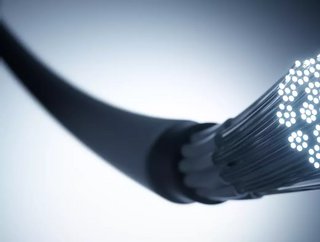Closing the digital divide through better use of fibre

The digital divide is more than just the difference between those who have access to the internet, particularly high-speed fibre optic broadband, and those who don’t. It is impacting digital literacy and even social mobility. The pandemic has brought the digital divide into sharp focus, as video conferencing, working from home and home schooling with virtual classrooms have all demanded high speed internet connection. A recent McKinsey report states the learning loss in the US is not likely to be temporary.
The digital divide is often assumed to be a rural vs urban debate, but the reality is not so clear cut.
In the UK, the Government is committed to delivering fast, reliable broadband to everyone in the UK – Project Gigabit - but this has primarily focused on rural areas. In the US, it is a similar story, with billions of dollars planned to extend the internet infrastructure in rural America. This strategy has led to the number of urban households without a connection to be almost three times higher – 13.6mn – than the rural households that don’t have a connection – 4.6mn.
So why are telecoms companies not laying high speed fibre optics in densely populated urban areas? The short answer is broadband adoption. Telecoms companies are in business to deliver digital services; that’s where they make their money. Most of the urban areas that don’t have the fibre optics are low-income - the residents can’t afford the broadband subscription. This is backed up by a survey from the Pew Research Centre in 2019, who found that half the people who did not have a broadband connection said they couldn’t afford it. Therein lies the wedge that is increasing the digital divide in urban areas.
But there is a solution: enable telecoms companies to monetise their fibre networks in low-income areas another way.
Multi-use fibre optic cables
Distributed Acoustic Sensing (DAS) technology enables fibre optic cables to become millions of sensors. DAS uses innovative photonics, advanced artificial intelligence and edge computing to convert fibre optic telecommunication cables into sophisticated acoustic sensors. These sensors are used in numerous applications, from traffic management to water pipeline monitoring. And using DAS is greener than traditional monitoring technology such as cameras because there are no batteries or wireless communication required at the sensing points, ie all along the fibre. Power requirements are limited to powering the centralised interrogator, which can economically be delivered through renewable sources and backup.
DAS works by essentially plugging into fibre optic cable networks. It sends thousands of pulses of light along the fibre optic cable every second and monitors the pattern of light reflected back. When acoustic or vibrational energy – such as those created by vehicle movements or people walking, or water escaping a broken pipe – creates a strain on the fibre, this changes the reflected light pattern.
DAS analyses these changes in light patterns to identify and to categorise the disturbances. Each type of disturbance has its own signature and the technology can tell, in real-time, what happened, where and when. The technology is sophisticated enough to identify incidents such as transport congestion, intrusion attempts around secure locations, or even footfall at a train station.
Quid pro quo
If telecoms companies can pay for their fibre networks in low-income areas by leveraging the DAS capability, the need to sell the monthly subscriptions becomes moot. Everyone wins.
But partnerships between those who own the data, those who look after the cities, and those who are experts in the sensing field, are key to closing the digital divide. These industrial ecosystems can together make a compelling business case. But the partnerships need to be created early in the process, ensuring easier fibre deployment, and enabling more widely available broadband access to those who need it most, as well as a fibre optic network that is working harder, providing other vital services for communities.






